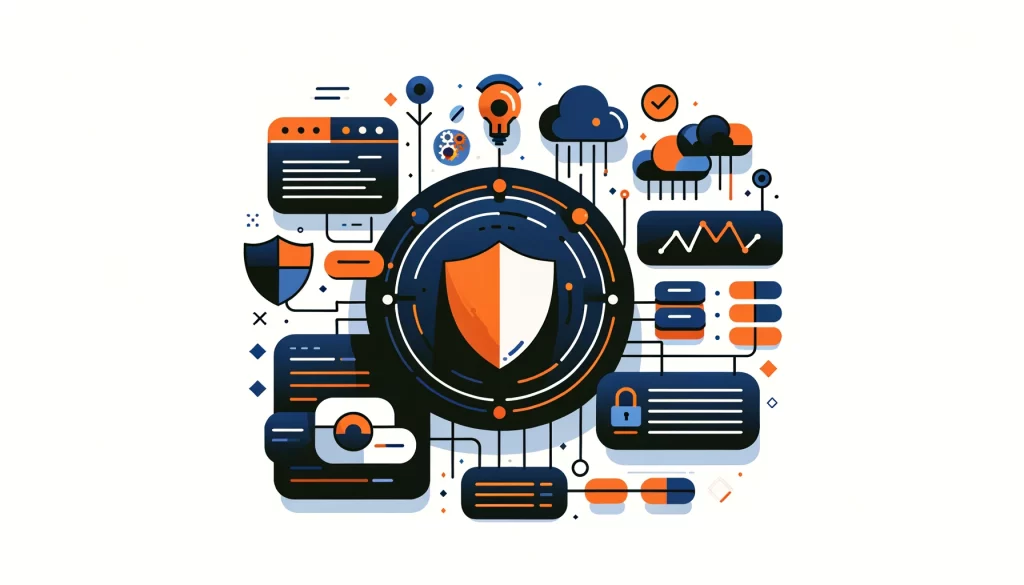
How SIEM: Security Information and Event Management Enhances Threat Detection

SIEM tools and services provide a comprehensive view of a company’s information security. SIEM tools offer real-time visibility, consolidate event logs, and apply intelligence to identify security issues.
How SIEM Works
SIEM combines two key technologies: Security Information Management (SIM) and Security Event Management (SEM). SIM gathers data from logs, analyzes it, and reports on security threats and events. SEM conducts real-time monitoring, alerts administrators about critical issues, and correlates security events.
For example, a financial institution uses SIEM to monitor its network. If unusual login patterns are detected, such as multiple failed attempts from an unknown location, it flags this activity and alerts security personnel.
Data Collection and Consolidation
SIEM tools collect data from numerous sources such as servers, operating systems, firewalls, antivirus software, and intrusion prevention systems. Modern SIEM tools often use agents to collect event logs, which then undergo processing and go to the system. Some tools, like Splunk, offer agentless data collection.
For instance, a large corporation can configure its firewalls and servers to feed event data into its tool. This data goes through consolidation, parsing, and thorough analyzing to identify potential security threats.
Policy Creation and Implementation
SIEM administrators create profiles that define normal and abnormal behaviors of enterprise systems. These profiles include default rules, alerts, reports, and dashboards, which can customize to meet specific security needs.
An example is a healthcare provider that uses SIEM to ensure compliance with HIPAA regulations. The SIEM system monitors access to patient records and alerts administrators if unauthorized access attempts occur.
Data Correlation
SIEM solutions categorize and analyze log files, applying correlation rules to combine individual events into meaningful security issues. If an event triggers a rule, the system notifies security personnel immediately.
For example, an e-commerce company uses SIEM to track user activity on its website. If the system detects actions indicating a brute-force attack, it alerts the security team to take preventive measures.
SIEM Tools in Action
Several SIEM tools are popular in the market, including ArcSight, IBM QRadar, and Splunk. Each tool offers unique features for log data collection, real-time threat detection, and third-party threat intelligence integration.
ArcSight
ArcSight gathers and examines log data from different security technologies, operating systems, and applications. When it detects a threat, it alerts security personnel and can automatically respond to stop the malicious activity.
IBM QRadar
IBM QRadar accumulates data from a company’s information systems, including network devices, operating systems, and applications. It analyzes this data in real-time, enabling users to quickly identify and stop attacks.
Splunk
Splunk Enterprise Security offers real-time threat monitoring and investigative analyzing to track activities linked to advanced security threats. Available as both on-premises software and a cloud service, Splunk supports integration with third-party threat intelligence feeds.
Achieving PCI DSS Compliance with SIEM
SIEM tools can help organizations meet PCI DSS compliance, ensuring that credit card and payment data remain secure. The tool detects unauthorized network connections, documents services and protocols, and inspects traffic flows across DMZs.
For example, a retail company using SIEM can monitor connections to its payment processing systems. The tool alerts the security team when detecting any unauthorized network activity, helping maintain PCI DSS compliance.
Real-World Examples
Consider a financial institution that employs SIEM to safeguard its assets. The system collects data from multiple sources, such as firewalls, servers, and user devices. When a suspicious pattern, like a sudden increase in data transfers to an external IP, is detected, SIEM alerts the security team. This allows for quick investigation and response, potentially averting a data breach.
Another example is a healthcare provider using SIEM to protect patient data. By monitoring access to medical records, the system can identify unauthorized access attempts and alert administrators. This ensures compliance with regulations like HIPAA and protects sensitive patient information.
Overcoming Challenges in SIEM Implementation
Implementing SIEM tools can be challenging, particularly in large organizations with diverse systems and data sources. Proper planning and customization are crucial to ensure that the system integrates seamlessly with existing infrastructure.
A phased approach can help. Start with a pilot project in a specific department, such as IT or customer service. Refine the integration process based on the initial deployment, then gradually expand to other departments. This method minimizes disruptions and ensures a smooth transition.
Future Trends in SIEM
As security threats evolve, SIEM solutions will continue to advance. Integration of artificial intelligence and machine learning will enhance threat detection capabilities. Edge computing will become more prevalent, with these systems adapting to support decentralized data processing.
For example, an organization might implement AI-powered tools to identify and respond to threats in real-time. These tools can analyze vast amounts of data quickly, identifying patterns that might indicate a security breach. Edge computing integration allows the systems to process data closer to its source, reducing latency and improving response times.
Conclusion
Security Information and Event Management is vital for maintaining a company’s information security. SIEM tools provide real-time visibility, manage event logs, and send automated notifications to help detect and respond to threats efficiently. Popular solutions like ArcSight, IBM QRadar, and Splunk offer robust features to enhance security and compliance.
Investing in SIEM technology equips organizations to handle complex security challenges, safeguard sensitive data, and support regulatory compliance efforts. As security threats continue to evolve, such tools will play an increasingly critical role in protecting organizational assets and ensuring resilience.
